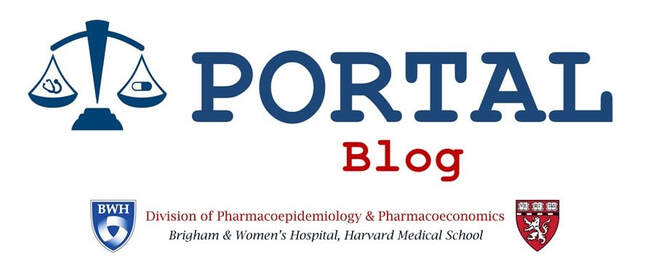Medicaid Spending on Drugs Marketed Without US Food and Drug Administration Approval in 20201/21/2022
The US Food and Drug Administration (FDA) reviews the safety and effectiveness of prescription drugs marketed in the US, but some products available since before 1938 have remained on the market without FDA approval. In 2006, the FDA estimated thousands of unapproved products remained on the market and launched the Unapproved Drugs Initiative (UDI) to encourage manufacturers of these drugs to voluntarily submit evidence of safety and effectiveness data in return for a period of market exclusivity. While the UDI led to approval of several dozen products, the program has faced criticism because in some cases the resulting market exclusivity periods disrupted competition, raised prices, and resulted in shortages.
In new research published in JAMA Internal Medicine, we identified only 134 unapproved drug products that were marketed in 2020, representing 0.2% of Medicaid prescriptions. Most unapproved drugs (65%) were marketed by a single manufacturer and 87% were distributed by three or fewer manufacturers. These findings suggest that the unapproved products represent a much smaller share of drug use than the FDA estimated in 2006, before the UDI was enacted. Additionally, because most remaining unapproved drugs had little or no competition, the existing UDI framework of offering a period of market exclusivity is likely ineffective at incentivizing voluntary submission of safety and effectiveness data. We recommend the FDA adopt a proactive and targeted regulatory approach to evaluate evidence of safety and effectiveness for remaining unapproved products. Simon J. Gunter, MPhil is a medical student at Harvard Medical School and a researcher at PORTAL. Aaron S. Kesselheim, MD, JD, MPH is a Professor of Medicine at Harvard Medical School and Director of PORTAL. Benjamin N. Rome, MD, MPH is an Instructor of Medicine at Harvard Medical School and a faculty member at PORTAL. Through the Accelerated Approval program, the FDA can approve drugs that treat severe or life-threatening diseases based on preliminary evidence of efficacy measuring changes to non-validated surrogate measures only “reasonably likely” to predict clinical benefits (i.e. how patients feel, function, or survive). Manufacturers routinely charge high prices for these drugs, and post-approval confirmatory evidence is frequently delayed. This has been highlighted by the recent accelerated approval of aducanumab for Alzheimer’s disease based on changes to a surrogate measure (amyloid plaques) but no clear effect on disease progression; the drug has a price tag of $56,000 per year, and the manufacturer has 9 years to perform confirmatory studies.
To address these concerns, some policy makers have proposed limiting prices for accelerated approval drugs until manufacturers demonstrate these drugs’ effectiveness on patient clinical outcomes, particularly for public payers like Medicare and Medicaid. For example, in April 2018, the Medicaid and CHIP Payment and Access Commission (MACPAC) endorsed a policy that would require manufacturers of accelerated approval drugs to pay higher rebates until their drugs’ efficacy on actual clinical outcomes is confirmed. In two new studies, researchers at Brigham and Women’s Hospital and Harvard Medical School evaluated spending on accelerated approval drugs in Medicare and Medicaid. The first study, published in JAMA Health Forum, focused on Medicare spending. We found that from 2015 to 2019, annual spending on accelerated approval drugs increased from $2.1 to $3.2 billion for drugs reimbursed under Medicare Part D (retail drugs) and from $2.7 to $5.9 billion for drugs reimbursed under Medicare Part B (clinician-administered drugs). Only 13% of this spending was on drugs exclusively marketed via accelerated approval; the remainder was spent on drugs that had at least one other non-accelerated approval indication. The second study, published in Health Affairs, focused on Medicaid spending and examined the impact of the recent MACPAC proposal to raise rebates for accelerated approval drugs. From 2015-2020, we found that Medicaid spent an estimated $6.7 billion on accelerated approval drugs; only one-third of this spending was on drugs exclusively marketed via accelerated approval. Requiring higher baseline rebates for these drugs could have saved Medicaid up to $5.2 billion over this 6-year period. The MACPAC proposal also recommended requiring higher inflationary rebates if accelerated approval drugs lacked completed confirmatory studies 5 years after approval; this would have generated smaller savings of up to $0.9 billion. The two studies demonstrate that drugs with accelerated approval make up a small but growing share of Medicare and Medicaid drug spending. However, policies aimed at lowering prices for accelerated approval drugs may have limited impact on overall drug spending. For example, the recent MACPAC proposal would likely save Medicaid less than $1 billion per year. Enacting policies to limit prices for accelerated drugs until they are proven to impact clinical outcomes makes a lot of intuitive sense, but our findings raise some important questions about how such policies would be implemented. For example, both studies found that most accelerated approval drug spending was on drugs that were also marketed for other indications via non-accelerated approval pathways. It remains unclear whether these drugs would be included in policies targeting high-priced accelerated approval drugs, and neither Medicare nor Medicaid reimburses drugs differently based on the reason they are prescribed. Benjamin N. Rome, MD is an Instructor of Medicine at Harvard Medical School and a faculty member at PORTAL. William B. Feldman, MD, DPhil, MPH is a postdoctoral fellow at PORTAL and an associate physician at Brigham and Women’s Hospital. Aaron S. Kesselheim, MD, JD, MPH is a Professor of Medicine at Harvard Medical School and Director of PORTAL. Researchers and policymakers in the US are exploring the implementation of health technology assessment and value-based pricing to negotiate drug prices and reduce US spending on prescription drugs. The US spends more than any other country on prescription drugs, and despite growing federal spending on them, patients still face negative impacts when they cannot afford their medications or rising insurance premiums. Price negotiation is gaining increasing support, and an important potential step for those negotiations is measuring the health benefit of new drugs. The most widely used measure of health benefit for health technology assessment is the quality-adjusted life year (QALY), a measure that combines the effects of a drug on life expectancy and quality of life. Though QALYs are used in other, high-income countries, in the US criticisms of QALYs have limited their use and undermined efforts to negotiate fair drug prices at the state and federal level.
In a new study in Health Affairs, we aimed to provide context to the debate about the QALY and understand the nature of the criticisms made against it. Using a systematic literature review, we identified the types of criticisms of the QALY and how they might be relevant to implementing drug health technology assessment in the US. Nine criticisms of QALYs in three categories were identified. The first category concerns the methods used to derive and measure QALYs. The second is that QALYs are neutral about who benefits and ignores the distribution of health. The third category concerns the potential for discrimination on the basis of age or disability. While the methods criticisms are being actively addressed by health economics researchers, the neutrality and disability criticisms highlight ethical challenges for any policy, which must address broader societal concerns about fairness that will arise in price negotiations and spending policies. There are real opportunity costs to patients when resources are spent on less cost-effective alternatives. One of the advantages of QALYs and a systematic approach to evaluating health gains is that they allow for an explicit conversation about how resources are spent and how they should be spent. Policy makers should recognize that some of the criticisms are indicative of ethical problems that will need to be addressed whether the QALY or an alternative is adopted. Leah Z. Rand, D. Phil. is a postdoctoral fellow with PORTAL. Aaron S. Kesselheim, MD, JD, MPH is a Professor of Medicine at Harvard Medical School and Director of PORTAL. By Liam Bendicksen, Benjamin N. Rome, Jerry Avorn, Aaron S. Kesselheim
Rising prescription drug costs continue to be a major concern for the American public and policymakers. Despite the widespread use of formal health technology assessment to control prescription drug prices in other high-income countries, US lawmakers at all levels of government have been hesitant to systematically assess the cost effectiveness of pharmaceuticals. In the absence of federal action on drug prices, however, lawmakers at the state level have forged ahead with new ways of addressing this pressing issue. Over the past four years, lawmakers in five states have enacted six prescription drug–pricing boards in pursuit of paying for drugs based on their clinical value and containing runaway spending. Though these boards vary substantially in terms of their structure, authority, scope, and leverage to secure lower drug prices, state drug–pricing boards are all authorized to review the prices of specific drug products and pursue value-based prices. Though using formal cost-effectiveness analysis to regulate and negotiate drug prices is common in Europe, the power of some drug–pricing boards to implement this practice is novel at the state level in the United States. In a new study in The Milbank Quarterly, we compare how these state drug–pricing boards operate. The article analyzes the boards’ similarities and differences in key aspects, including positioning within state bureaucracies, the payers over which the boards have jurisdiction, the mechanisms that trigger pricing reviews, the information that boards require manufacturers to report, and the leverages that boards wield to compel manufacturers to lower costs. The researchers also evaluated the pricing reviews that boards have completed to date and discussed how the structure of each board may influence regulators’ ability to achieve value-based prices. Prescription drug–pricing boards are a promising new tool for states to achieve cost savings and value in pharmaceuticals. States interested in pursuing value-based drug prices using this approach should build on the experiences and designs of existing drug–pricing boards and take care to address the legal barriers that boards face. Liam Bendicksen is an undergraduate student at Brown University studying Public Health and Public Policy and a summer researcher at PORTAL. Benjamin N. Rome, MD, MPH is an Instructor of Medicine at Harvard Medical School and a faculty member at PORTAL. Jerry Avorn, MD is emeritus Professor of Medicine at Harvard Medical School, Founding Chief of the Division of Pharmacoepidemiology and Pharmacoeconomics at Brigham and Women's Hospital, and Co-Director of PORTAL. Aaron S. Kesselheim, MD, JD, MPH is a Professor of Medicine at Harvard Medical School and Director of PORTAL. By Benjamin N. Rome, Wiliam B. Feldman, Rishi J. Desai, and Aaron S. Kesselheim As US prescription drug spending continues to rise, there has been particular concern about the common practice of drug manufacturers raising prices for existing drugs each year, by an average of 9.1% over the past decade. Drug manufacturers argue that these increases in “list price” are not meaningful, since they offer rebates and discounts and that result in lower “net prices.” However, these rebates are given to insurers and pharmacy benefit managers and not passed along to patients. In a new study published in JAMA Network Open, we studied the correlation between changes in list prices, post-rebate net prices, and average out-of-pocket spending among patients with commercial insurance for 79 brand-name drugs. From 2015 to 2017, average list prices increased by 16.7%, net prices by 5.4%, and average out-of-pocket spending by 3.5%. Overall, there was no correlation between changes in list or net prices and patient out-of-pocket spending, but there was variation based on patients’ insurance designs. Approximately half of patients in the study paid deductibles or coinsurance; for these patients, average out-of-pocket spending rose by 15.0% from 2015 to 2017 and was correlated with changes in drugs’ list but not net price. The other half of patients, who paid only fixed copayments, had no increase in average out-of-pocket spending. These results show that exorbitant list prices set by drug manufacturers do influence how much patients pay for drugs. Insurers are increasingly using deductibles and coinsurance to shift high drug prices to patients, but this exposes patients to the unregulated prices set by drug manufacturers. Higher out-of-pocket costs have been linked with lower medication adherence and worse clinical outcomes. We propose several possible policy solutions, including preventing drug manufacturers from raising list prices faster than inflation or penalizing them for doing so (the latter of which is already done by Medicaid), eliminating confidential rebates by manufacturers to insurers, or mandating that these rebates be passed along directly to patients. By Aayan N. Patel, Aaron S. Kesselheim, and Benjamin N. Rome Generic drugs account for 90% of filled prescriptions and have saved the US healthcare system more than $1 trillion in the past decade. While generally much less expensive than brand-name drugs, spikes in the prices of certain generic drugs have been widely reported, resulting in higher patient out-of-pocket contributions and excess spending by government programs like Medicaid. In new research published in Health Affairs, we examined Medicaid prescription drug spending and found that 1 in 5 generic drugs doubled in price between 2014 and 2017, though the frequency of price spikes decreased over this period and was improved from studies of prior time periods. Price spikes were most common among injectable drugs, drugs with three or fewer manufacturers, and drugs experiencing shortages. These generic drug price spikes resulted in roughly $1.5 billion in excess Medicaid spending from 2014 to 2016, representing 4.2% of Medicaid spending on generic drugs during this period. Since 2017, the Medicaid Drug Rebate Program requires generic drug manufacturers to provide additional rebates if prices increase faster than inflation (similar to brand-name drugs), but generic drug price spikes will continue to impact out-of-pocket costs and spending for non-Medicaid patients. A prior study that found that the frequency of generic drug price spikes had increased from 2007 to 2013, and the new study suggests this trend has reversed in recent years, possibly because of increased public scrutiny and efforts by Congress and the US Food and Drug Administration to increase generic competition. While most price spikes were among generic drugs with 3 or fewer manufacturers, 1 in 10 drugs with 8 or more manufacturers experienced a price spike, suggesting competition alone may not be sufficient to eliminate price spikes. The US Department of Justice and forty-six states have ongoing investigations into multiple generic drug manufacturers about collusive activity that allegedly occurred in late 2013 to 2015. We suggest that policymakers should target injectable drugs, drugs with limited competition, and drugs experiencing shortages to further reduce the frequency of such spikes and prevent unnecessary spending by patients and payers associated with generic drug price spikes. By Bryan Walsh and Aaron S. Kesselheim
This blog was originally published on Bill of Health, the blog of the Petrie-Flom Center for Health Law Policy, Biotechnology, and Bioethics at Harvard Law School. Patients may face increased out-of-pocket drug costs as a result of a new rule finalized by the Centers for Medicare & Medicaid Services (CMS) in July 2020 that would permit wide use of co-pay accumulator adjustment programs (CAAPs). These increased costs may have effects on medication adherence, and in turn may affect health outcomes. In a recent commentary published in the American Journal of Managed Care, we explain the background to this rule and suggest ways CMS could narrow it to avoid these potential negative effects. Drug manufacturers often have temporary assistance programs that cover all or a portion of a patients’ out-of-pocket costs when filling a prescription for a brand-name drug. While this reduces financial barriers to filling prescriptions, it creates economic waste when lower cost generic versions exist, yet are overlooked because the assistance programs make it cheaper for the patient to fill the brand-name drug. Commercial insurers use CAAPs to respond to this concern. CAAPs incentivize use of lower cost generics over brand-name drugs by ignoring payments made by drug manufacturer assistance programs when determining whether a plan beneficiary’s out-of-pocket costs have reached the annual limit imposed by the Affordable Care Act. But the success of CAAPs requires three things: (1) Lower-cost alternatives must exist, such as in the form of generic versions of the brand-name drug, or generic versions of drugs in the same class that have similar clinical benefits; (2) beneficiaries must know that these restrictions on manufacturer assistance exist, and therefore be able to choose the lower-cost alternative; and (3) beneficiaries would have met their yearly out-of-pocket limits, and thus would have been excused from coinsurance and co-payments for a portion of the year, only if these restrictions did not exist. In July 2020, CMS finalized a rule that ignores the first two requirements. The finalized rule permits CAAPs even in situations where no lower cost generic exists, and it fails to mandate disclosures to beneficiaries informing them of the existence of such programs. This allows insurers to ignore all payments made by drug manufacturer assistance programs while potentially surprising beneficiaries with unexpected out-of-pocket costs. This is particularly detrimental to beneficiaries with high yearly out-of-pocket expenditures for prescription drugs who expect to meet their yearly maximum and be excused from such expenses for a portion of the calendar year. The new administration should therefore seek to narrow this rule to permit CAAPs only in situations where a lower cost generic alternative exists and is medically available, and mandate disclosures informing beneficiaries of the existence of CAAPs in their plan to assist in making informed decisions concerning the acceptance of drug manufacturer assistance. By Veronique Raimond
Pharmaceutical spending per capita in the U.S. is higher than in all other industrialized countries. Policymakers seeking lower drug spending often suggest benchmarking prices against other countries, including France, which spends half as much as the US on prescription drugs. In a new study, PORTAL researchers found that Medicare could save billions of dollars annually on prescription drug spending if the US adopted the French approach to evaluating and negotiating drug prices and limiting unfettered annual drug price increases. We compared the price dynamics in France and the US between 2010 and 2018 for the six brand-name drugs with the highest gross expenditures in Medicare Part D. We analyzed associations between price changes in each country and key regulatory events in the light of a comprehensive review of US and French laws and regulations related to drug pricing. Prices for the six drugs studied were higher in the US than in France. In 2018, if Medicare had paid French prices for just the 6 the brand-name drugs in the cohort, the agency would have saved $5.1 billion. We identified 12 factors that explain why the US spends more than France on drugs, including variations in unit prices and the volume of prescriptions, driven by health technology assessment and value-based pricing in France. American citizens are rightly concerned about the high cost of medications, and this study shows that regulations can help to reduce the cost of drugs and to align it with their value. We point out that linking a drug’s price to clinical benefits at the launch of the drug and over its lifetime, as observed in France, is key to controlling spending. The regulation of prescription drugs in France is governed by rules that can inform discussions of US prescription drug policy and potential Medicare price negotiations. By William Feldman The true prices of prescription drugs in the US are obscured by complex, private negotiations. Manufacturers set sticker prices (or list prices) of drugs and then negotiate confidential rebates with insurers to arrive at a final “net” price. Patients, physicians, researchers, and policymakers lack basic information about how much a given drug actually costs. With a week remaining before the presidential election, the Trump administration released the “Transparency in Coverage” Final Rule. For prescription drugs, this rule requires, among other things, that insurers disclose list and net prices online. This rule was completed along with several other last-minute executive orders and rules related to drug-pricing. Political and legal challenges may undo many of these other initiatives. But, in a new perspective in the New England Journal of Medicine, we argue that Trump’s transparency initiatives may endure. First, such efforts enjoy bipartisan support, including from President-elect Biden himself. Second, in the absence of Congressional intervention, the Biden administration would have less than a year to complete new rulemaking were it to seek rescission. Finally, the rule is likely to survive court challenge. We examine two recent court cases on other transparency initiatives--Merck vs. the Department of Health and Human Services and American Hospital Association vs. Azar—to explore why. At the heart of these decisions is a low evidentiary requirement on the part of HHS; the Department need not provide definitive proof that transparency will facilitate patient decision-making or lower prices but may instead rely on common-sense analysis and predictive judgment. If implemented, the “Transparency in Coverage” rule would begin to peel away the secrecy of drug pricing. Whether the rule will achieve its intended effects is far from clear. As a recent review on healthcare pricing transparency underscores, empirical data about the benefits of transparency are sparse and conflicting. But, as the Trump-era transparency initiatives continue to be litigated, it may the courts in the end that finally hand researchers and policymakers an opportunity to study the effects of transparency and develop more rational policies moving forward.  William B. Feldman, MD, DPhil, MPH is a postdoctoral fellow at PORTAL and an associate physician at Brigham and Women’s Hospital. By William Feldman
Asthma and chronic obstructive pulmonary disease (COPD) are prevalent among Medicare beneficiaries; approximately 1 in 20 has asthma, and 1 in 9 has COPD. Inhalers remain the primary treatment for these diseases. Yet, as prior research from PORTAL has demonstrated, inhalers are protected by numerous patents—often on the devices themselves rather than the drug ingredients contained within the devices—and generic competition for these products is limited. In a new study in Annals of the American Thoracic Society, we sought to quantify Medicare Part D spending on inhalers over the last several years and analyze the extent to which changes in spending were driven by changes in costs per inhaler or utilization. The study found that, between 2012 and 2018, Medicare Part D spent a total of $39.7 billion on inhalers after adjusting for estimated rebates and inflation. Among the 42 inhalers covered during the study period across nine different classes, only two inhalers were generic. Spending increased from $4.5 billion in 2012 to $6.5 billion in 2018. Three of the nine classes were combination maintenance inhalers—inhaled corticosteroid (ICS)-long acting beta agonists (LABA), long-acting muscarinic antagonist (LAMA)-LABAs, and ICS-LAMA-LABAs—and these were responsible for $1.8 billion of the $2.0 billion growth. Taking all nine classes together, nearly 90% of the growth in spending could be explained by increased utilization, as the number of beneficiaries receiving inhalers climbed from 8.1 million in 2012 to 11.5 million in 2018 and the number of inhalers prescribed jumped from 34.4 million to 47.7 million. Only around 10% of the spending growth was driven by increased costs per inhaler. These findings have important implications for the future Medicare Part D spending. There are now three generic ICS-LABA inhalers on the market: Mylan’s Wixela Inhub (a version of Advair Diskus [fluticasone-salmeterol]), GSK’s authorized generic of Advair Diskus, and Teva’s authorized generic of AirDuo Respiclick (fluticasone-salmeterol). Further generic competition in the ICS-LABA class may help lower the costs per inhaler and reduce overall Medicare spending. Yet, the other two classes of combination maintenance inhalers have no generic competition. Inhalers in the LAMA-LABA and ICS-LAMA-LABA classes have patents lasting through at least 2030. Without generic competition, these classes will likely represent a growing share of inhaler spending in Medicare Part D. More generally, in the absence of drug-pricing reform, Medicare spending on inhalers will likely continue to climb as the US population ages and Part D provides insurance coverage for more seniors with asthma and COPD. |
AuthorPORTAL Blog posts are authored by PORTAL faculty, trainees, and collaborators. Archives
January 2022
Categories |
|
Program On Regulation, Therapeutics And Law (PORTAL)
Division of Pharmacoepidemiology and Pharmacoeconomics 1620 Tremont Street, Suite 3030 Boston, MA 02120 |











 RSS Feed
RSS Feed
